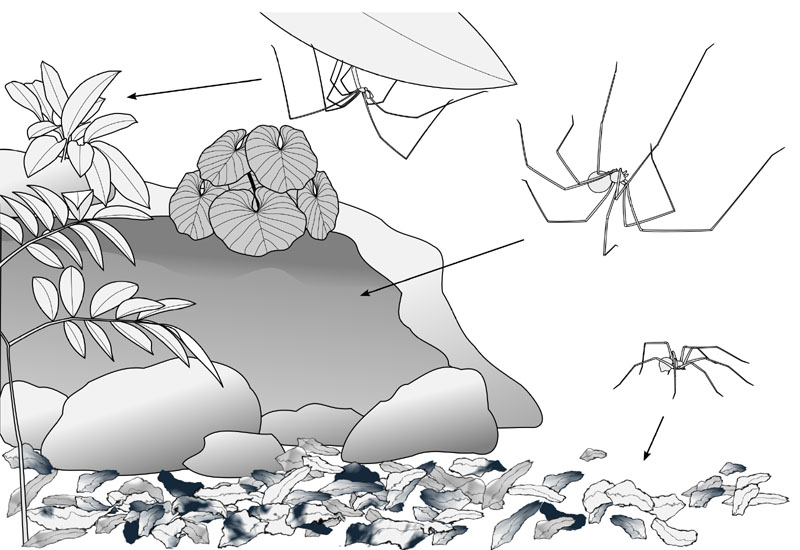Assessments of ancestral microhabitat revealed frequent evolutionary change. In particular, within the largest subfamily Pholcinae, numerous changes from near-ground habitats towards leaves and back were found. In general, taxa occupying leaves and large sheltered spaces had higher diversification rates than ground-dwelling taxa. Shifts in speciation rate were found in leaf- and space-dwelling taxa.
Our analyses result in one of the most comprehensive phylogenies available for a major spider family and provide a framework for any subsequent studies of pholcid spider biology. Diversification analyses strongly suggest that microhabitat is an important factor influencing diversification patterns in pholcid spiders.

The three main microhabitats in pholcid spiders: life leaves, large sheltered spaces, and leaf litter. Drawing: J. Eberle.